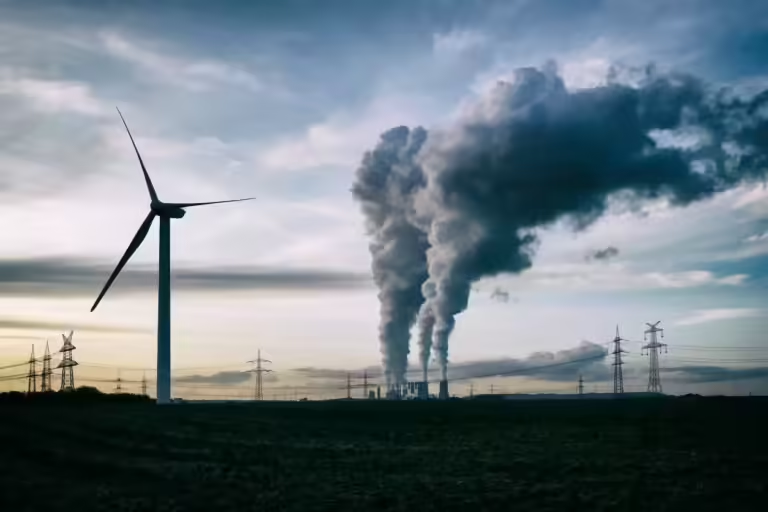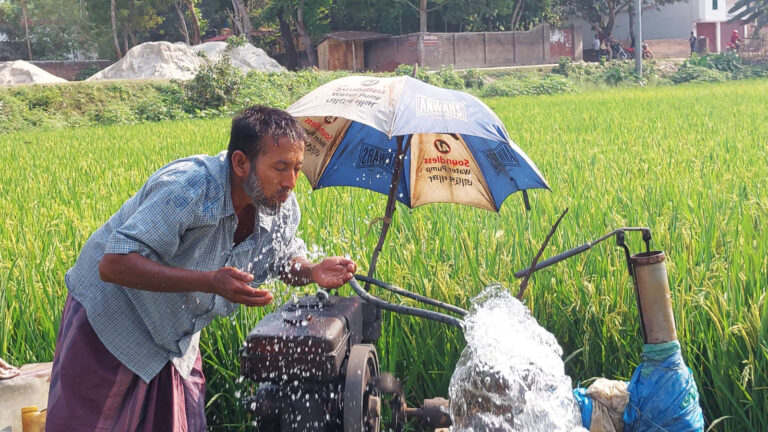
The tap is running dry, and the world is parched. The water cycle has become increasingly erratic and extreme, swinging between deluge and drought, according to a new report from the World Meteorological Organization (WMO). It highlights the cascading impacts of too much or too little water on economies and society.
The WMO Report
The State of Global Water Resources report says only about one-third of the global river basins had “normal” conditions in 2024. The rest were either above or below normal – the sixth consecutive year of clear imbalance.
In 2024, severe drought hit the Amazon Basin, other parts of South America, and southern Africa. Meanwhile, central, western, and eastern Africa, along with parts of Asia and Central Europe, experienced wetter-than-normal conditions.
“Water sustains our societies, powers our economies and anchors our ecosystems. And yet the world’s water resources are under growing pressure and – at the same time – more extreme water-related hazards are having an increasing impact on lives and livelihoods,” said WMO Secretary-General Celeste Saulo.
About 3.6 billion people already face water shortages at least one month a year, according to UN Water. This number could rise to over 5 billion by 2050, leaving the world far from achieving Sustainable Development Goal 6.
WMO Reports River Basin Abnormalities
Over the past six years, only about one-third of the world’s river catchment areas experienced normal discharge levels compared to the 1991–2020 average, while two-thirds faced excesses or shortages, underscoring the increasingly erratic hydrological cycle.
Several major basins, including the Amazon, São Francisco, Paraná, and Orinoco in South America, as well as the Zambezi, Limpopo, Okavango, and Orange in southern Africa, recorded far below-normal discharge.
Meanwhile, West African basins such as the Senegal, Niger, Lake Chad, and Volta experienced extensive flooding. Central Europe and parts of Asia also saw above-normal discharge, swelling rivers like the Danube, Ganges, Godavari, and Indus.
In addition, nearly all of the 75 major lakes surveyed worldwide registered above or much above-average temperatures in July, raising concerns about water quality, the report noted.
Glacial Melt and Sea Level Rise
In 2024, glaciers worldwide experienced their third consecutive year of widespread ice loss, shedding 450 Gt of ice — equivalent to a massive block measuring 7 km in height, width, and depth, or enough to fill 180 million Olympic swimming pools. This volume of meltwater alone raised global sea levels by about 1.2 millimeters in just one year, heightening flood risks for hundreds of millions of people living in coastal areas.
Scandinavia, Svalbard, and North Asia saw record ice loss in 2024. In contrast, the Canadian Arctic and Greenland’s edges experienced more moderate declines. In the tropics, Colombia’s glaciers shrank by 5% in 2024.
The Underlying Causes
The global water crisis stems from multiple interconnected factors. These pressures threaten the availability of clean freshwater for people and ecosystems. Although Earth holds vast amounts of water, only a small fraction is accessible as freshwater. This limited supply is increasingly threatened by climate change, pollution, deforestation, and poor management.
Rising global temperatures are accelerating evaporation from land and water bodies while also speeding up glacier and snowpack melt, which at first boosts river flow but ultimately depletes crucial water reserves for downstream communities. Climate change is also disrupting rainfall patterns, causing severe droughts in some areas and catastrophic floods in others, especially during monsoon seasons. In addition, warming oceans are driving sea-level rise through thermal expansion and ice melt. This encroaching seawater contaminates coastal aquifers, jeopardizing both drinking water supplies and agriculture.
- Deforestation and land degradation
The global water crisis stems from a combination of climate change, deforestation, pollution, and poor management, all of which threaten the limited supply of accessible freshwater. Rising temperatures, shifting rainfall patterns, and sea-level rise are disrupting the water cycle, intensifying droughts, floods, glacier loss, and saltwater intrusion into aquifers. At the same time, deforestation reduces groundwater recharge, increases flooding and erosion, and disrupts rainfall patterns, further straining water resources for people and ecosystems.
- Unsustainable water management practices
Poor management and weak infrastructure worsen water scarcity by amplifying other stressors. Groundwater is being pumped out much faster than it can naturally recharge, causing water tables to drop sharply. At the same time, inefficient farming and policies supporting water-intensive crops waste enormous amounts of freshwater.
Potential Solutions and Mitigation Strategies
Addressing the global water crisis requires a multifaceted approach that reduces consumption, improves efficiency, and integrates climate risk management strategies. Cutting greenhouse gas emissions is essential to stabilize water resources in a changing climate. Renewable energy, ecosystem restoration, and sustainable practices also reduce water-intensive energy demands.
Effective management practices, including conservation, smart water grids, decentralized systems, and water recycling, ensure efficient usage and minimize losses across communities. Restoring ecosystems through reforestation, wetland protection, and watershed management strengthens natural water cycles, improves recharge, and safeguards long-term water security. Investment in modern infrastructure, including reservoirs, desalination, leak repairs, and smart technologies, enhances resilience against climate variability and population growth.
Agriculture is the world’s largest consumer of freshwater, putting immense strain on limited resources. Transformative changes are needed to conserve water while sustaining food production under growing climate pressures. Shifting to micro-irrigation methods like drip and sprinkler systems minimizes waste by delivering precise water quantities directly to plant roots. Adoption of drought-resistant crop varieties and improved soil health practices, such as mulching and conservation tillage, greatly enhance water efficiency.
Rainwater harvesting systems allow farmers to store rainfall for dry periods, reducing dependence on depleting groundwater reserves and unreliable rainfall.
The WMO’s alarming report serves as a stark reminder of the intensifying global water crisis . This report also urges the need for action. With growing pressure on water resources and worsening climate impacts, urgent global cooperation is vital. Decisive action is needed to secure a sustainable water future for all.
For more such informative articles stay tuned at The World Times.




